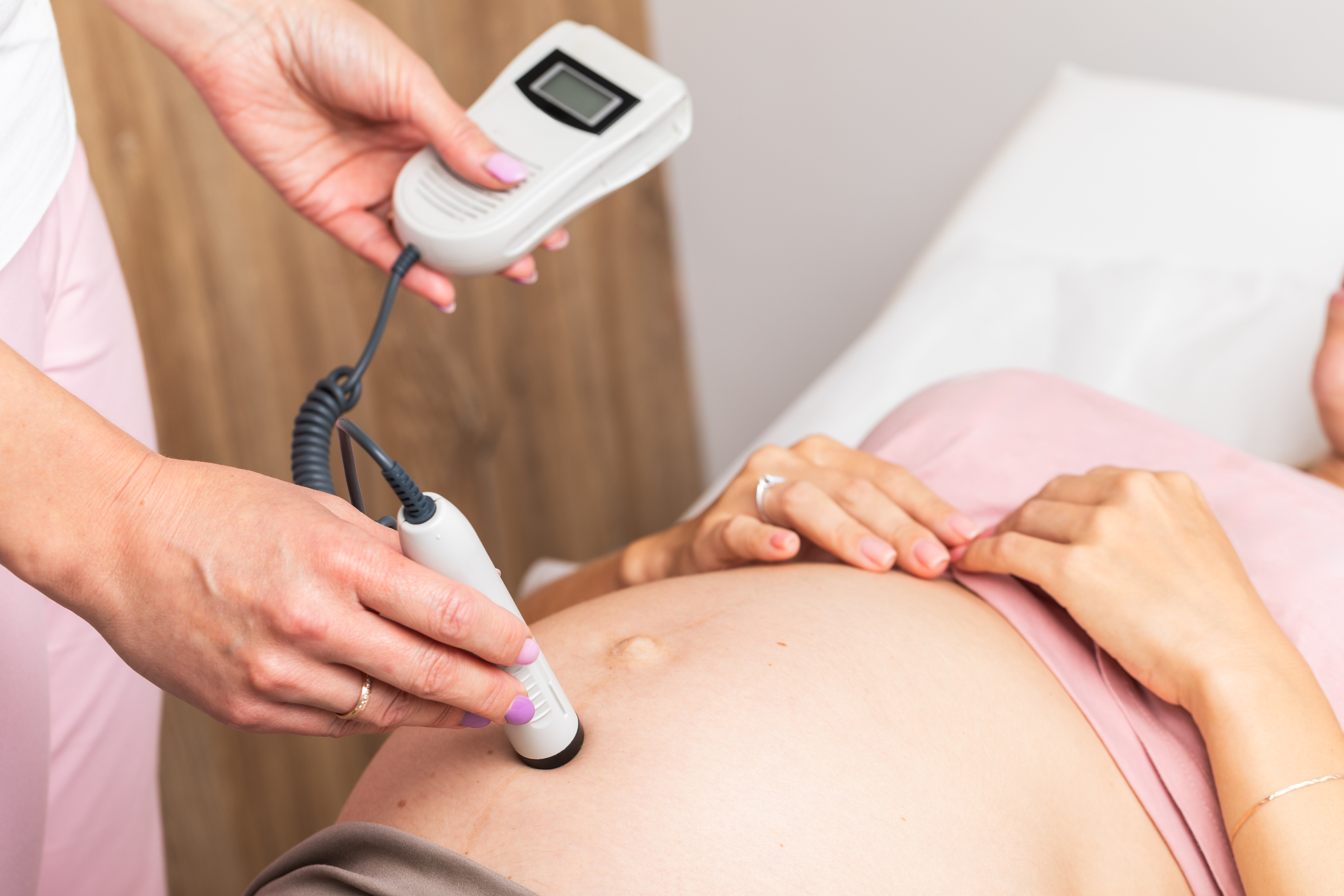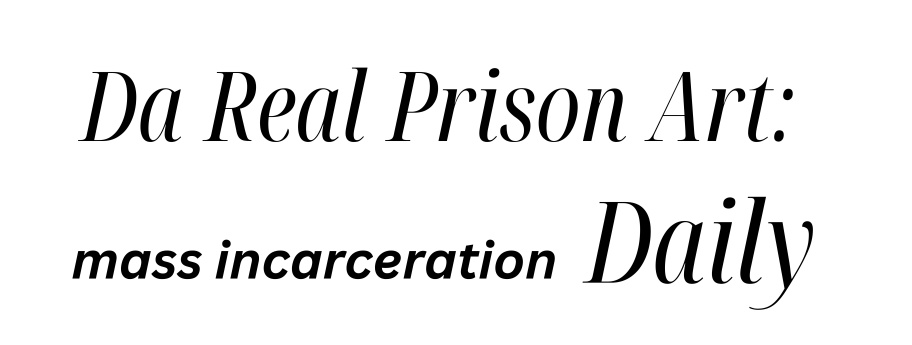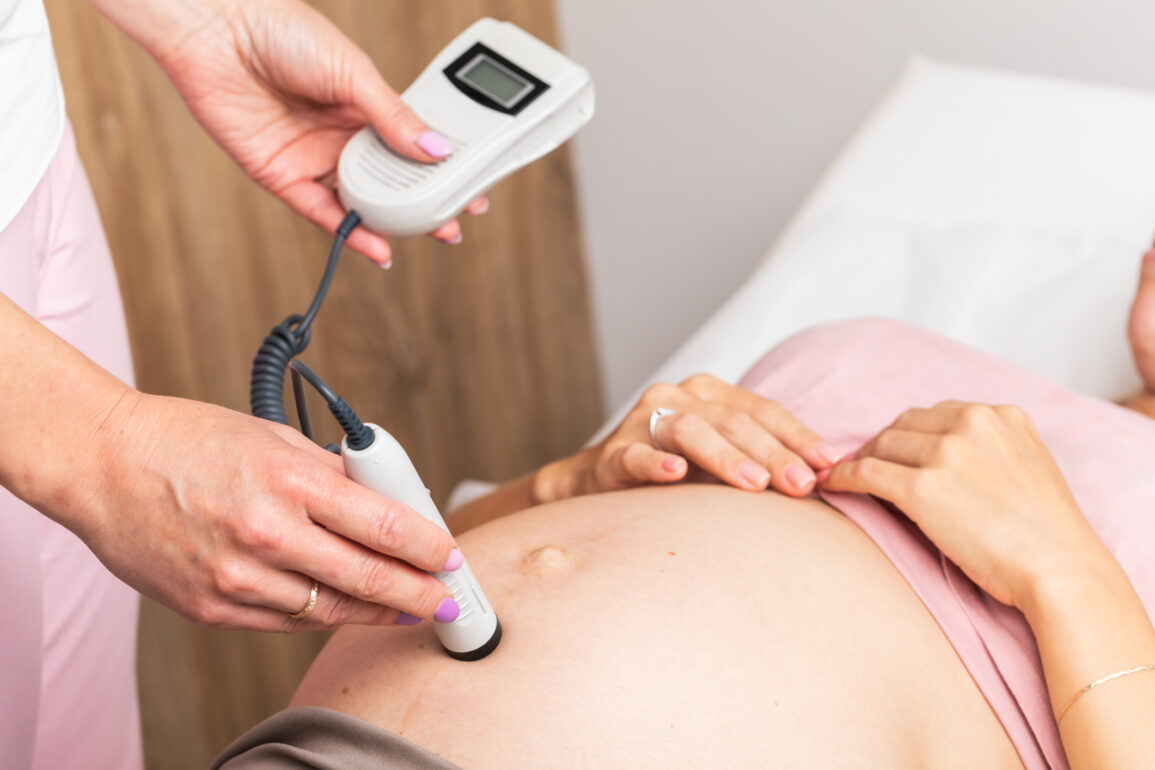
Drew Umberger found out she was pregnant the day after she signed a 15-year plea deal for racketeering in December 2017.
“I was devastated,” Umberger told Prism. “I thought I would have fought harder if I knew I was pregnant. I remember I looked at the nurse and said, ‘I just signed a plea bargain for prison.’ She was so overcome, she needed to walk away.”
Umberger would go on to serve four years and three months for crimes she committed in 2009—years before she was a pregnant mother of two. Despite the devastating circumstances of her incarceration, Umberger said she received little support throughout her pregnancy and postpartum.
Umberger is one of the thousands of women and girls who are incarcerated in the U.S. every year. The introduction of “tough-on-crime” policies in the 1970s gave way to mass incarceration, a system that now ensnares a record number of women. The number of incarcerated women has drastically increased since 1980, making them the fastest-growing population in the criminal legal system. With that increase comes unique reproductive health needs, ranging from menstrual products to contraceptive care. But one health issue is a matter of life and death, and it’s been consistently swept under the rug for decades: pregnancy, including perinatal depression (PND) that many expectant and new mothers face while behind bars.
A “niche issue”
Approximately 47% of people in U.S. state prisons and 57% in federal prisons have children under the age of 18. Despite the staggering magnitude of parental incarceration, scant measures are in place to monitor and mitigate the effects imprisonment has on families. Consequently, expectant mothers who are incarcerated are one of the most vulnerable groups that are overlooked.
Before her incarceration at the Helms Facility, a state prison in Atlanta, Georgia, Umberger said she was only allowed to meet with a mental health professional once for 10 minutes. As a mother abruptly separated from her young children, Umberger faced emotional turmoil that she said could have been helped with counseling. The stress of pregnancy inside the criminal legal system, fears of losing her child to family services, and concerns about her two children in foster care were overwhelming burdens she should not have faced alone.
The limited prenatal care offered by the prison also had dire consequences. One morning in August 2018, Umberger did not get out of bed because she felt so ill and swollen. Prison staff checked her blood pressure and rushed her to the hospital. Umberger’s blood pressure skyrocketed because she had preeclampsia, a life-threatening pregnancy complication characterized by high blood pressure that is a leading cause of maternal death worldwide.
Because of a previous cesarean section 18 years prior, Umberger said she was led to believe that she was required by the state to have another C-section for her current pregnancy. However, according to a spokesperson from the Georgia Department of Corrections, the agency has no policy that prohibits vaginal birth after cesarean (VBAC). Those in custody who are considered to have low-risk pregnancies and who previously had a C-section are “offered VBAC by the physician,” the spokesperson said.
Umberger also alleged that the nurses responsible for her care were not trained in postpartum care and did not know how to change her C-section vacuum bandage or catheter. She also said she had to endure male law enforcement officers overseeing intimate aspects of her birth and postpartum period, an experience she detailed in July 2024 at a Senate Judiciary Subcommittee hearing on the pervasive abuse of pregnant incarcerated women.
“It was degrading,” Umberger told Prism.
Worst of all, Umberger was allowed only two hours with her daughter before she was given to state custody. As she was being discharged from the hospital, Umberger asked to see her newborn one more time. An officer told her it was not in her “best interest.”
The short time Umberger shared with her daughter would be the only time they spent together for several years. Her two older children were placed in foster care during her incarceration. To cope with the separation from her children, Umberger said she threw herself into work at the prison. She cut grass, did trash detail, and even cared for horses—anything she could do to build a wall around her emotions.
“I was scared I would never see my children again, and that would have put me in the grave,” Umberger told Prism. “I was scared people were mistreating them. I was scared they weren’t clean. I was scared they were hungry. I was scared that they weren’t going to school. … I was scared nobody was loving them. I was scared people were mistreating them, beating them. Scared my daughter or my son was getting molested.”
According to, Dr. Carolyn Sufrin, an associate professor of gynecology and obstetrics at Johns Hopkins University School of Medicine, pregnant incarcerated women are treated as a niche issue. However, it’s estimated that nearly 58,000 pregnant people are sent to prisons and jails each year.
Sufrin has a long history of providing health care to women in the criminal legal system. In her 2017 book “Jailcare,” she chronicled the six years she spent working as an OB-GYN at California’s San Francisco County Jail. In 2017, she also founded Advocacy and Research on Reproductive Wellness of Incarcerated People (ARRWIP), a research group within Johns Hopkins focused on reproductive health, rights, and justice issues facing incarcerated women.
According to data collected by Sufrin, roughly 3.8% of women are pregnant when they enter state or federal prison. While this percentage may seem small, the estimated overall number of incarcerated expectant mothers across the criminal legal system is enough to fill the U.S.’s largest jail three times over.
However, the exact number of pregnant or new mothers incarcerated in the U.S. every year is unknown. This is largely because data collection efforts by federal and state governments or local agencies have been insufficient or nonexistent for more than two decades, leaving academics and advocacy groups to fill the void. A 2024 Bureau of Justice Statistics (BJS) report found that many facilities do not track basic metrics on maternal health, such as pregnancy status, obstetric exams, outcomes, or complications.
With the passage of the First Step Act of 2018, which in part banned shackling pregnant women in federal prisons, the BJS is now required to collect pregnancy data in federal prisons, though much of the data is still forthcoming. The efforts also exclude state prisons and local jails, where a significant portion of women are held.
There are still many unknowns about pregnancy in the criminal legal system, including the impact of perinatal depression, a long-lasting form of depression that occurs during pregnancy and after childbirth. PND affects an estimated 10% to 20% of women in the U.S. during pregnancy and postpartum. Although incarcerated women already experience alarming levels of anxiety and depression, their exclusion from national discussions on PND leaves them even more vulnerable to its impact.
Hurdles to getting treatment
Only a handful of studies quantitatively measure PND among expectant and recent mothers who are incarcerated in the U.S. The few existing studies are hampered by small sample sizes and varying evaluation methods. Despite these drawbacks, the results clearly and consistently demonstrate concerning levels of depression and anxiety among mothers who are incarcerated—sometimes as high as 80%. When coupled with other high-risk factors incarcerated women may have, there is a high likelihood that large numbers of incarcerated mothers have had PND. Sufrin told Prism that the “vast majority” of incarcerated patients she has cared for had some mental health diagnosis, so it was likely that many had perinatal mental health issues.
Incarceration itself can be understood as a risk factor for PND. Entry into the carceral system means that preexisting traumas are “multiplied,” Sufrin explained. Incarcerated people who are pregnant must contend with isolation from their support system, anxieties about the care they will receive inside, the risk of going into labor while in custody, surveillance from the family policing system, and judgment that comes with “having their fitness for motherhood on trial,” Sufrin said.
But even as the risk factors for PND are extraordinarily high for incarcerated women, screening for the illness in the carceral system is nearly nonexistent.
The guidelines for both the American College of Obstetricians and Gynecologists (ACOG) and the National Commission on Correctional Health Care (NCCHC) recommend offering pregnancy testing to women of childbearing age upon admission to a facility, but this is seldom performed. In one survey of jails across the nation, only 37.7% reported performing pregnancy tests. Some facilities rely on self-reporting, though broadly most jails do not prioritize identifying pregnancy. In part, this is because the average length of stay for women is 19 days.
“Jails would say they didn’t want to do a pregnancy test because the turnover was so fast, and pregnant people were in and out so quickly that they couldn’t even get their results back to them,” said Rebecca Shlafer, an associate professor of pediatrics at the University of Minnesota. But, she said, it’s also a matter of cost.
Jail administrators and health service providers are wary of doing pregnancy testing because pregnant people will then require prenatal care—an expense jails don’t want to take on, said Shlafer, who is also the research director of the Minnesota Prison Doula Project (MnPDP) that provides pregnancy and parenting support to parents who are incarcerated.
Incarcerated women identified as pregnant or postpartum could easily be screened for PND using the Edinburgh Postnatal Depression Scale (EPDS), a 10-question survey favored by ACOG. But most jails and prisons don’t have the staff, training, or motivation to administer the survey.
Brandy Henry, a social worker by training and an assistant professor at Penn State College of Education, told Prism that the lack of integration of evidence-based, validated screening tools within the criminal legal system is a problem that extends beyond conditions like PND.
Henry, whose research focuses on the health of incarcerated populations, said that many screening tools are designed with a criminal legal perspective, often prioritizing the assessment of reincarceration risk over-diagnosis and treatment. The combination of inadequate training and the underuse of clinical tools contributes to diagnostic errors, obscuring the true prevalence of mental health issues within the criminal legal system.
“Until very recently, it is very rare for these systems to use clinical screening tools, which is a problem because there are often many false positives and negatives,” Henry said.
Pregnant and postpartum people who are incarcerated may also resist attempts to screen for PND. The stigma associated with mental health serves as a barrier to seeking a diagnosis and assistance, particularly within the carceral setting. When administering screenings in the criminal legal system, pregnant and postpartum mothers may evade diagnosis by intentionally adjusting their answers so that they can receive low scores.
“When screening moms in the community, we might see EPDS scores as high as 30. But in the carceral setting, we were seeing scores of 0, which I would almost never see in the community,” said Susan Hatters-Friedman, a forensic and perinatal psychiatrist and former president of the American Academy of Psychiatry and the Law (AAPL). People know what answers to give [if they don’t want to appear to have depression]. If the question asks how much they are crying, they are going to mark ‘never.’”
The lack of privacy in carceral settings intensifies fear of ostracization and stigmatization. Overcrowding is a significant issue in the criminal legal system, leaving people inside with little to no personal space. Many cite the lack of privacy in prison as a contributing factor to not seek diagnosis or treatment for a mental health condition.
“I’ve been in correctional facilities where the psychiatrists or psychologists who are on the treatment team have to resort to talking to someone through a cell door in a more communal space where there are other people around that can overhear the entire conversation,” said Dr. Christine Montross, an associate professor of psychiatry and human behavior at Brown University’s Warren Alpert Medical School.
One of the reasons PND is generally not screened for at intake is lack of awareness, but also because options for treatment in the carceral setting are limited.
“The quality and quantity of pregnancy and postpartum care varies wildly from jail to jail and prison to prison, youth detention facility to youth detention facility,” Sufrin said.
Sufrin sees several avenues to improve support for pregnant and postpartum mothers in the criminal legal system, such as lactation support, the federal Maternal Mental Health Hotline, doula programs, and alternative sentencing programs. Some of these programs are already in effect. Six states—California, Minnesota, Missouri, New Jersey, Texas, and Wisconsin—have legislation that allows pregnant or postpartum mothers to remain with their babies in community-based programs. Notably, while these measures offer essential support to incarcerated mothers and may help alleviate PND symptoms, they do not directly address its diagnosis or treatment. Until the criminal legal system addresses PND head-on, doula programs, though still relatively uncommon, may serve as effective stopgaps.
In Minnesota, women under the age of 50 in jails and prisons are screened for pregnancy by law. Those who are pregnant are referred to the prison’s parenting coordinator, who provides information about available services, including group-based education and one-on-one birth support through the MnPDP.
A majority of pregnant women in the system will be separated from their newborns after giving birth. Through weekly meetings with MnPDP, these women can process the separation from their infant. “It’s really important for their mental health and feelings of sadness and potentially depression following the separation from their infants,” Shlafer told Prism.
Umberger, who was released from prison on April 2, 2022, echoed the importance of community when processing pregnancy, birth, and separation in prison.
I feel like women who are having babies should all be in the same dorm so they can lean on each other for support. That’s where I got my counseling from: women who were going through the same thing as me.
Drew Umberger, Care navigator at Policing Alternatives and Diversion Initiative
“I feel like women who are having babies should all be in the same dorm so they can lean on each other for support,” Umberger said. “That’s where I got my counseling from: women who were going through the same thing as me.”
Beyond the importance of peer support, a pregnant or postpartum mother’s ability to relate to her doula is critical. This is where people like Tabatha Trammell come in. Trammell experienced postpartum depression while cycling in and out of jail for drug use and dealing. She is now sober, a certified prison doula based in Gwinnett County, Georgia, and the founder of the nonprofit Woman With a Plan. In her experience, stigma makes many mothers reluctant to discuss their depressive feelings during or after pregnancy. Trammell is able to leverage her experiences to get current and formerly incarcerated mothers to open up about their mental health struggles.
“I use my background to try to help treat these ladies on an authentic level. I let them know, ‘Hey, you can’t lie to me. I’ve been there, done that. You can get the services you need, they’re out there. But first, you got to be transparent. I’m not here to judge you. I got my own skeleton in the closet,’” Trammell said. “They don’t want no schoolwork person. … They want somebody with that lived experience. They want somebody that they can relate to, and once they do that, they’ll be more receptive and open to getting treatment and taking better care of themselves.”
When it comes to actually treating PND, serotonin reuptake inhibitors (SSRIs) are “tried and true,” said Hatters-Friedman. Both AAPL and ACOG support the use of SSRIs as first-line pharmacotherapy for PND.
In recent years, newer medications have come on the market. In 2019, the Food and Drug Administration approved brexanolone, which is administered through a 60-hour continuous IV infusion. In 2023, the FDA also approved zuranolone, the first oral medication to treat PND. The introduction of medications specifically for PND is a step in the right direction, reflecting increased awareness of the condition and the importance of treating it. However, SSRIs remain an inaccessible treatment option to those in the carceral system.
Life and death
With so many issues plaguing the U.S. carceral system, some might question why PND should be a national priority. The answer is simple: PND is a matter of life and death. In some cases, care for this condition can be a life-saving intervention.
While most mothers with PND do not attempt suicide, it remains a considerable source of maternal mortality. According to the Centers for Disease Control and Prevention (CDC), around 80% of pregnancy-related deaths in the U.S. are preventable, with mental health conditions accounting for 23% of deaths. Suicide is also a leading cause of death in American prisons and jails, making expectant parents who are incarcerated a particularly vulnerable population.
Perinatal depression care is also a matter of racial equity. Our nation’s maternal mortality crisis is a health burden that is unequally distributed. Those who are Black or Indigenous have maternal mortality rates at least twice that of their white counterparts. These communities are also significantly overrepresented in the criminal legal system—at nearly six times the rate of white women in certain age groups. Taken together, these parallel statistics mean that if racial justice, maternal mortality, and preserving the well-being of future generations is important, “then we absolutely have to address the perinatal mental health of people who are incarcerated,” Sufrin said.
Caring about PND should also be seen as part of the growing effort to end the dehumanization of incarcerated people.
“There’s kind of a normalization that part of ‘adjusting’ to prison is being depressed,” said Gina Fedock, a social worker and associate professor in the Crown Family School of Social Work at the University of Chicago. Fedock, whose scholarship focuses on the mental health of women in the criminal legal system, said the feelings experienced by incarcerated people during pregnancy are more nuanced than depression and despair.
Generally, pregnancy can bring a sense of hope, connection, joy, and purpose, Fedock explained. But women in prison who are given 24 to 48 hours with their newborns experienced “complicated and prolonged grief.”
“Some of them know where their babies go. Some of them don’t. And that process of going from having a special experience and something to look forward to, to having that emptiness is really traumatic,” Fedock said.
Addressing PND within the criminal legal system also requires a fundamental shift in how we view both the humanity of people inside and the role of incarceration in society. If Americans want people to return to their communities from prison as “functioning members of society,” said Montross of Brown University, that requires first providing them with more than “dehumanizing circumstances that offer the bare minimum of care.”
“I think that societally, it behooves us to understand that we do better to stabilize people, beginning during their prison or jail sentences,” Montross said.
Equally important is addressing the serious dearth of knowledge surrounding motherhood and the U.S. criminal legal system. Nationwide, there are serious problems and delays in integrating electronic health records in jails and prisons, even 16 years after the passage of the Health Information Technology for Economic and Clinical Health Act promoted their use. There are also institutional roadblocks to contend with. For example, for a pregnancy statistics study, Sufrin worked with 22 correctional facilities and six jails—five of which are the largest in the country. Once the study concluded, most facilities stopped collecting data.
“It’s seen as a burden,” Sufrin said, noting that the intentional lack of transparency in publicly funded institutions is yet another challenge.
To chip away at the problems enveloping PND and incarceration, experts like Sufrin want to see mandatory standards for maternal health care as well as perinatal screening questions and services. However, given the current administration, meeting this goal in the near future is likely unrealistic. Far easier to accomplish is adding basic questions to the jail and prison intake process, such as: Have you been pregnant in the last 12 months? Or: Have you given birth in the last 12 months? These simple questions could go a long way in potentially identifying women with PND, though treatment might remain elusive.
Despite the odds stacked against her, Umberger successfully forged her own path. Within a year of her release from prison, she landed a job as a care navigator with the Policing Alternatives and Diversion Initiative, an Atlanta-based nonprofit. She also purchased a home and regained custody of her two older children. She is now working on getting visitation rights for the daughter she gave birth to while incarcerated.
Like Trammell, Umberger now harnesses her experiences to help others like her. Not only did she testify last summer during the Senate subcommittee hearing, in March she will begin her new role as maternal incarceration and opioid reduction program manager at Motherhood Beyond Bars. The nonprofit supported her and her children during and after her incarceration. In the future, she hopes to open a home for formerly incarcerated mothers with substance use disorders who are trying to reunite with their children.
“I didn’t endure that just so another one can go and endure behind me,” Umberger said. “So even if I create one small change, all of that time will have been worth it.”
Editorial Team:
Tina Vasquez, Lead Editor
Carolyn Copeland, Top Editor
Rashmee Kumar, Copy Editor
This post was originally published on this site be sure to check out more of their content.







